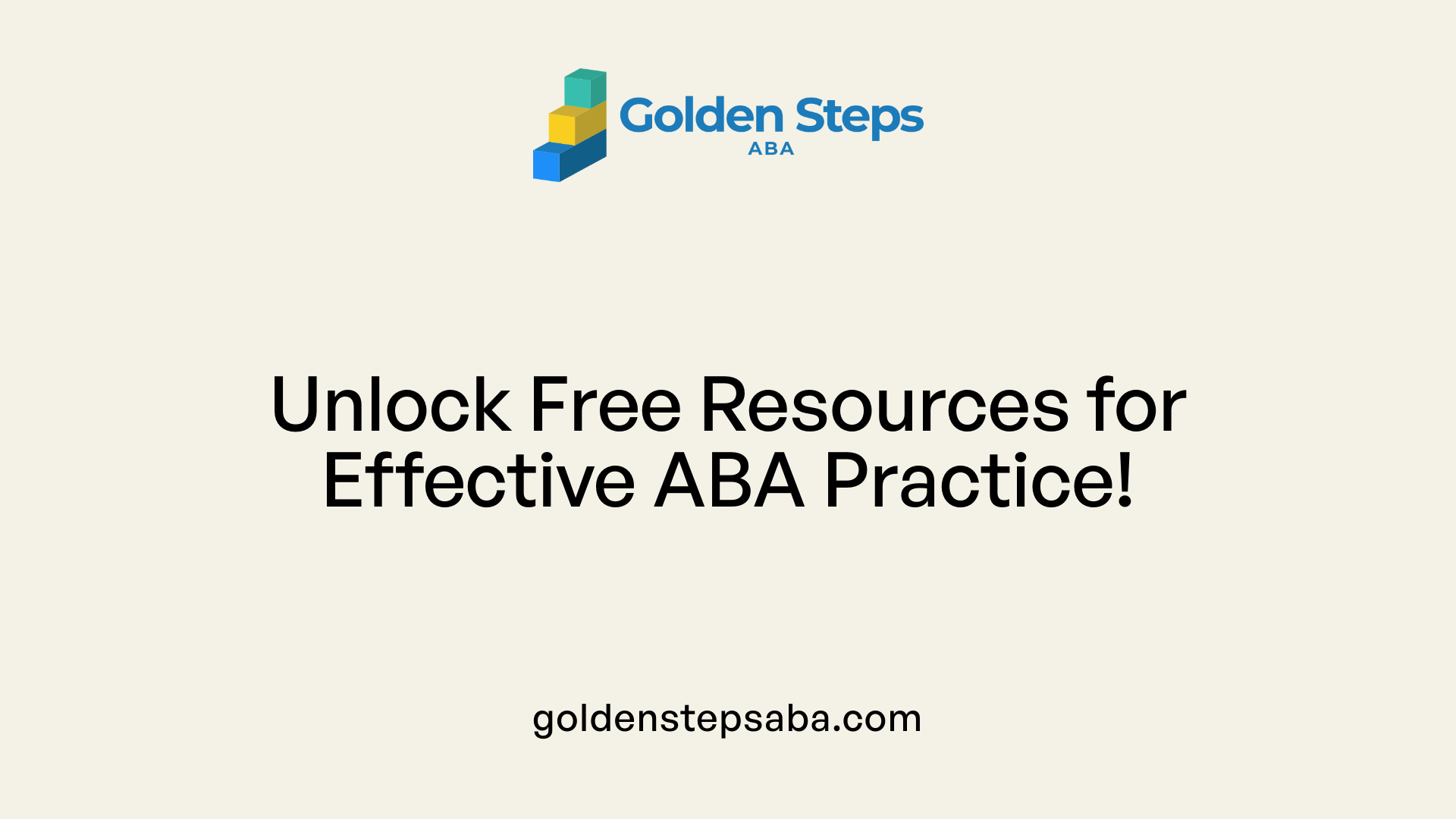Exploring the Digital Frontier of ABA Therapy
Applied Behavior Analysis (ABA) therapy has evolved significantly since its inception, especially as it embraces the digital age. This article delves into the vast array of online resources available for ABA therapy, which are crucial for parents, therapists, and caregivers. Our guide will help you understand the principles of ABA, explore its dimensions, and discover where to find free resources and programs, whether you're at home or connected online.
Understanding the Core Dimensions of ABA

What are the 7 dimensions of ABA?
The seven dimensions of Applied Behavior Analysis (ABA), established by Baer, Wolf, and Risley in 1968, serve as a framework for guiding effective interventions. They are:
- Applied: This dimension emphasizes improving socially significant behaviors, ensuring the focus is on meaningful changes in the individual's life.
- Behavioral: Ensuring that targeted behaviors are observable and measurable, making it easier to assess progress.
- Analytic: This dimension stresses the importance of data and evidence-based practices to analyze the effectiveness of interventions.
- Technological: Techniques and procedures must be clearly defined to ensure that they can be replicated and understood by others.
- Conceptually Systematic: Interventions should utilize established techniques based on solid theoretical frameworks.
- Effective: The outcome of ABA interventions should lead to measurable improvements in behavior.
- Generality: Behavior changes should be sustainable across various contexts and over time.
Why are these dimensions important in behavioral interventions?
These dimensions guide practitioners in developing interventions that are robust and effective. By focusing on these core elements, therapists and educators can create tailored approaches that meet the unique needs of individuals, particularly those on the autism spectrum.
How do online resources apply these dimensions?
Online platforms provide a wealth of information that emphasizes these dimensions, enhancing accessibility for practitioners and families. They offer numerous resources, including blogs, podcasts, and instructional materials, which support understanding and implementation of the dimensions in practical settings. For example, posts detailing effective ABA strategies or technology-driven interventions facilitate a better grasp of these principles, ensuring users can implement effective behavioral change strategies in various environments.
Implementing ABA Therapy in Home and Online Settings

Can ABA therapy be done at home or online?
Yes, ABA therapy can be effectively conducted at home or online, providing greater flexibility and comfort for families. These formats allow for personalized learning experiences that align with the child’s daily routines.
Benefits of home and online ABA therapy
Home and online settings offer several benefits:
- Comfort: Children may feel more relaxed and willing to engage in therapy when it occurs in their own home.
- Real-life Application: Skills can be taught and practiced in their natural environment, enhancing generalization.
- Parent Involvement: Parents can actively participate and reinforce learning, which is essential for consistent progress.
- Flexibility: Online therapy eliminates travel time and barriers, particularly beneficial for families in remote areas.
Key components and strategies
The effective implementation of ABA therapy involves:
- Reinforcement Strategies: Positive reinforcement increases desirable behavior, and this can be easily applied in home settings.
- The ABC Model: Understanding the Antecedent, Behavior, Consequence framework allows families to identify triggers and responses.
- Data Collection: Monitoring progress is vital; software tools can help track behavior changes and therapy effectiveness.
Role of professionals and parents
Qualified professionals, such as Registered Behavior Technicians (RBTs) supervised by Board Certified Behavior Analysts (BCBAs), play a crucial role in guiding therapy sessions. They ensure that strategies are effectively implemented and adjust interventions as needed. Parents, on the other hand, are instrumental in applying what they learn during sessions to foster the child’s development outside the therapy environment, reinforcing skills and ensuring consistency in learning.
This approach creates a supportive learning atmosphere that integrates therapy seamlessly into everyday life, promoting sustained behavioral improvement.
Free Resources for Practicing ABA Therapy

What are some free ABA therapy resources for therapists, teachers, parents, and RBTs?
A variety of free resources are available for those practicing Applied Behavior Analysis (ABA) therapy, which can be incredibly beneficial for therapists, teachers, parents, and Registered Behavior Technicians (RBTs). One valuable site offers downloadable materials designed to enhance the efficacy of ABA therapy for children with autism.
Users can find a plethora of essential items, including:
- Data Collection Forms: Tools that streamline the documentation of progress and effectiveness of interventions.
- Worksheets and Flashcards: Resources that assist in teaching communication and behavioral skills, ensuring lessons are engaging and effective.
- Visual Schedules: These are crucial for creating structure in learning environments, helping reduce anxiety and facilitating smoother transitions.
- Token Economy System Tools: Provides methods for reinforcing positive behaviors systematically, making learning more tangible for children.
- Social Stories: Aids in teaching social skills by narrating specific situations that children may face.
- ABA Jargon Cheat Sheet: Simplifies complex terminology, making it easier for new providers to communicate effectively.
- Check-in, Check-out Template: Helps teachers give feedback and reminders to students, enhancing accountability and understanding.
These free accessible materials empower practitioners and caregivers, allowing them to implement effective ABA strategies tailored to individual learners' needs. The downloadable resources can truly support a collaborative environment for everyone involved in the therapy process.
Finding and Utilizing ABA Resources for Therapy

How can I find free downloadable ABA therapy materials and activities?
To find free downloadable ABA therapy materials and activities, look into various specialized websites dedicated to providing resources for parents and therapists. For example, the ABA Therapy Activity Guide is an excellent starting point that offers a range of downloadable teaching aids and worksheets.
Many sites provide printable materials tailored for techniques such as Discrete Trial Training (DTT) and Natural Environment Teaching (NET). Resources like flashcards that depict emotions, social skills activity worksheets, and tools such as token boards and charts for implementing a token economy can be found.
Using these materials can significantly assist children with autism in developing fundamental skills both at home and within therapy settings. They allow for a structured and well-supported approach to learning and behavior modification, contributing to a more conducive learning environment.
Utilization in therapy and home settings
These resources are versatile and can be integrated into both therapy sessions and home routines. For instance, parents can use printable flashcards to reinforce learning during daily activities, facilitating consistent practice outside of structured therapy hours.
In therapy settings, professionals can utilize ready-made worksheets to streamline sessions and focus on implementing strategies that promote learning. Utilizing resources like visual schedules can help create a sense of structure, reducing anxiety and promoting smoother transitions during therapy.
By embedding these materials into everyday interactions, parents and therapists can enhance meaningful engagement and support therapeutic goals effectively.
Harnessing Online Possibilities in ABA Therapy
Digital resources are reshaping the landscape of ABA therapy, offering unprecedented access to education, techniques, and collaborative opportunities. By utilizing these online tools, therapists, parents, and caregivers can make informed decisions and enhance therapeutic outcomes for children with autism. Whether exploring certification programs or accessing free materials, the digital age offers a multitude of avenues to enrich the practice of ABA therapy, driving forward positive social change and developmental progress.
References
- 14 ABA Resources You Need to Know About - Therapy Brands
- How to ABA: Practical Programs and Resources
- Resource Hub for ABA Professionals - Verbal Beginnings
- Applied Behavior Analysis (ABA) | Autism Speaks
- ABA Therapy Resource Hub - Adapt For Life
- ABA Therapists Articles & Resources - ABA Therapy for Autism
- ABA Therapy Resources: Your Ultimate Resource for ABA Therapy
- Free ABA Materials | AutisticHub
- Autism Society of America Shares Applied Behavior Analysis (ABA ...




